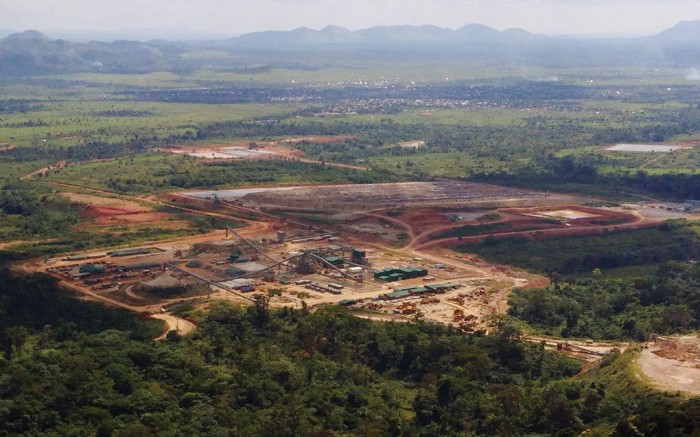A Chinese mining investment fund and a Connecticut-based fund management company are giving Banro (TSX: BAA; NYSE-MKT: BAA) some breathing room this year with a private placement, term loan and streaming deal, worth nearly US$100 million.
The funds will come in handy as Banro ramps up Namoya, its second gold mine in the Democratic Republic of the Congo (DRC) 200 km southwest of its Twangiza gold mine, which has operated since 2012.
Most of the financing comes from China’s Resource Finance Works, the general partner for the Baiyin Stream Partnership I, LP, an offshore mining investment fund sponsored and funded by Baiyin Nonferrous Group Co., Ltd., a vast metals and mining conglomerate based in China’s interior Gansu province, with investments in resource development, extraction and refining in China, South Africa and Peru.
Part of the term loan is provided by Gramercy Funds Management LLC, a US$6-billion investment manager for emerging markets that was created in 1998, and has offices in London, Hong Kong, Singapore, Mexico City and Buenos Aires.
Banro’s finance package comes in three parts: a US$8.75-million private placement that will give Resource Finance Works (RFW) 16.6% of Banro’s outstanding common shares (50 million shares and 2.5 million warrants); a term loan funded by RWF and Gramercy for US$22.5 million, with a maturity of Nov. 30, 2016, and extendable until Nov. 30, 2019; and a streaming transaction with RFW on the Twangiza mine worth US$67.5 million.
Mining analysts were quick to weigh in.
“This appears good news for Banro, given that the company’s future is secure, and the mine will be able to operate at full potential, rather than being constrained by a shortage of capital,” analysts at U.K.-based Investec Securities said in a research note.
Cosmos Chiu and Kevin Chiew of CIBC were more circumspect, noting that they had suspended their price target for Banro shares on the basis of the company’s current operations and capital position, identifying Banro as having “higher operating risk and a balance sheet that is already constrained, or could come quickly under pressure.”
“Overall, the financing package provides much needed near-term liquidity to Banro,” they wrote, “but further encumbers the company, which is already laden with stream agreements, interest payments and dividend payments, which we believe will hinder the company’s profitability.”
Richard Brissenden, chairman of Banro’s board of directors, said in prepared remarks the streaming arrangement and private placement, “along with the committed strategic relationships involved,” would give the company “a solid base to achieve its longer-term growth objectives, as well as the refinancing requirements in 2017.”
As for Baiyin, chairman Liao Ming was quoted in Banro’s press release as saying its investment in the Canadian mining company was consistent with its strategy of investing in “low-cost mines with large gold endowments, and substantial growth opportunities.”
Twangiza produced 105,092 oz. gold in the first nine months of 2015, costing US$539 per oz. and all-in sustaining costs of US$631 per oz., according to Banro’s financial results on Nov. 11. (In the third quarter, cash costs rang in at US$501 per oz. — a 19% decrease year-on-year — while all-in sustaining costs were US$608 per oz., in a 13% decrease from the year-earlier period.)
At Namoya, the miner increased stacked material and gold content, leading to improved gold production, “as the operation progresses towards steady-state operating levels.” The mine produced 12,157 oz. gold during the third quarter from 446,653 tonnes of ore, which was stacked and sprayed on the heap-leach pads at an indicated head grade of 1.67 grams gold per tonne.
Proceeds from the financing will be doled out for various objectives, including the repayment of Tranche 1 and 2 of gold forward sales agreements on Twangiza, as well as the repayment of a DRC bank loan facility nearing maturity, and major project suppliers. Some of the proceeds also pay accrued preferred share dividends, the defeasance of future interest on outstanding senior notes, and capital expenditures involved in expanding crushing capacity at Twangiza.
The financing package announced on Dec. 31 includes an 8.5% annual interest rate on the term-loan facility for the first two years, followed by a three-month London interbank offered rate, plus 8% for the term’s last two years. RFW and Gramercy will each provide one-half of the loan facility, and receive 5-million share purchase warrants exchangeable for Banro’s common shares at US$0.2275.
Under the streaming agreement, RFW receives 12.5% of Twangiza’s life-of-mine production at a gold price of less than US$1,150 per oz.; 11% at a gold price greater than US$1,150 per oz. and under US$1,500 per oz.; and 9.5% at a gold price greater than US$1,500 per oz. gold. Once the total gold production from Twangiza exceeds 1.1 million oz., the entitlement percentages will apply at 50% of the percentages outlined in the deal.
RFW will also buy US$60 million of outstanding debt and preferred shares from current investors (US$40 million of the outstanding Banro senior secured notes issued by Banro in March 2012, and US$20 million of the outstanding preferred shares issued by Banro subsidiaries in February 2014).


Be the first to comment on "Banro lands US$98.8M"